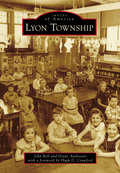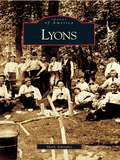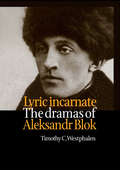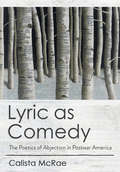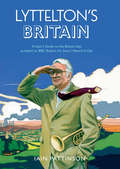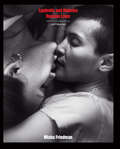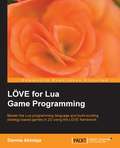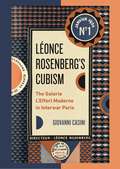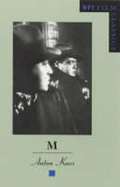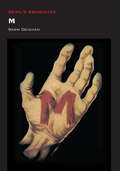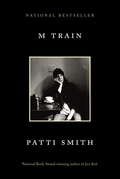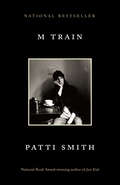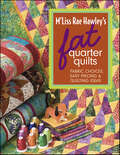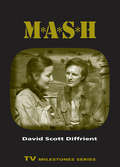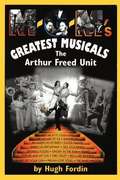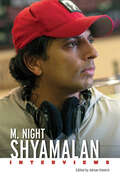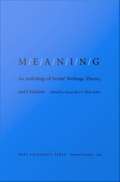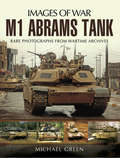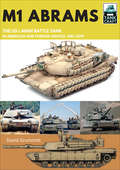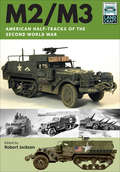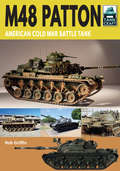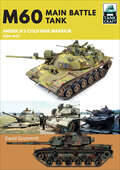- Table View
- List View
Lyon Township
by John Bell Hugh D. Crawford Diane AndreassiLyon Township and the unincorporated hamlet of New Hudson are nestled in the southwest corner of Oakland County. They have a rich history of agricultural production. Early 20th-century records show that farmers and families socialized closely with their neighbors in the nearby village of South Lyon when the hard work of the day was done. New Hudson supported two general stores, a tavern, a post office, schools, and churches. However, the start of the I-96 expressway in the 1950s took commuters off the streets and away from local businesses, causing some to close. By the 21st century, the tides turned again, when the proximity to the expressway brought attention to the community and heralded in a new construction boom, earning Lyon Township the distinction in 2012 as one of Michigan's fastest-growing communities.
Lyons
by Mark AthitakisDespite its modest size, the village of Lyons has played a key role in the growth of nearby Chicago. In 1673, French explorers Fr. Jacques Marquette and Louis Joliet learned of a Native American portage route connecting the Mississippi River and Lake Michigan, and that path helped make Lyons an important stop for fur traders and other businessmen throughout the 18th and early 19th centuries. In 1834, the town boasted just "a saw mill, three houses, and a tavern," but by the 1830s and 1840s, with the construction of the Illinois and Michigan Canal, Lyons became a boomtown that attracted waves of immigrants from Poland and Germany. Its numerous taverns and outdoor picnics--known as "skillies"--attracted visitors from throughout thearea, who also came to sites like the Cream City Amusement Park and the Hofmann Tower, now a national historic landmark. Lyons, featuring many archival photographs never previously published, explores the town's rich history from its early exploration to the present day.
Lyric Incarnate: The dramas of Aleksandr Blok
by Timothy WestphalenLyric Incarnate examines the plays of Aleksandr Blok, the pre-eminent poet of Russian Symbolism and one of the greatest poets of the twentieth century. Blok's plays have received less attention than his poetry in the West, and this book is the first and only English-language monograph devoted to Blok the playwright. In chronological succession, each of Blok's major plays is examined in detail. Special attention is accorded to Blok's relations with the major directors of his time, particularly Meyerhold and Stanislavsky. Blok's role, for instance, in Meyerhold's formulation of the theatre of the grotesque proved to be critical, and his relation to the Moscow Art Theatre just before the October Revolution helped to define the future course of that theatre. Blok's innovative dramatic technique is carefully studied at each stage in his career, from his earliest "lyric dramas" , such as A Puppet Show and The Stranger, to his great tragedy The Rose and the Cross.
Lyric as Comedy: The Poetics of Abjection in Postwar America
by Calista McRaeA poet walks into a bar... In Lyric as Comedy, Calista McRae explores the unexpected comic opportunities within recent American poems about deeply personal, often embarrassing, experiences. Lyric poems, she finds, can be surprising sites of a shifting, unruly comedy, as seen in the work of John Berryman, Robert Lowell, A. R. Ammons, Terrance Hayes, Morgan Parker, Natalie Shapero, and Monica Youn. Lyric as Comedy draws out the ways in which key American poets have struggled with persistent expectations about what expressive poetry can and should do. McRae reveals how the modern lyric, rather than bestowing order on the poet's thoughts and emotions, can center on impropriety and confusion, formal breakage and linguistic unruliness, and self-observation and self-staging. The close readings in Lyric as Comedy also provide new insight into the theory and aesthetics of comedy, taking in the indirect, glancing comic affordances of poetry. In doing so, McRae captures varieties of humor that do not align with traditional terms, centering abjection and pleasure as facets of contemporary lyric practice.
Lyttelton's Britain: A User's Guide to the British Isles as heard on BBC Radio's I'm Sorry I Haven't A Clue
by Iain PattinsonThe I'm Sorry I Haven't A Clue team of Barry Cryer, Graeme Garden and Tim Brooke-Taylor, in the company of their esteemed chairman Humphrey Lyttelton, have been recording their BBC radio show around the UK for longer than any of them can remember ... that's about a week - or twenty minutes in the case of Barry Cryer. At each venue Humph would present a short history of the location, written by Iain Pattinson, to the mutual delight of the audience, the team and their delightful scorer Samantha (who somehow always found time for a rewarding poke around the area's backstreets).We are privileged to present, in gazetteer form, the very best of Humph's local histories form Radio 4's multi award-winning 'antidote to panel games'. As accurate as Wikipedia and as comprehensive as Reader's Digest, this unique guide tells you everything you never knew you wouldn't ever need to know about the background and inhabitants of Britain's most prominent towns and cities. The intelligent reader will waste no time in adding it to their collection.BristolIt was from Bristol in 1497 that John Cabot set off to find a new route to the Spice Islands by sailing north-west. He instead discovered a strange, hostile world which he named 'Newfoundland', until the natives explained that they actually called it 'Swansea'.NottinghamIt's well documented in official records that the city's original name was 'Snottingham' or 'home of Snotts', but when the Normans came, they couldn't pronounce the initial letter 'S', so decreed the town be called 'Nottingham'or the 'home of Notts'. It's easy to understand why this change was resisted so fiercely by the people of Scunthorpe.BrightonA settlement is first recorded in Brighton as long as ago as 3000 BC, when Celtic Druids practised their ancient worship of oaks, mistletoe and virgins, and indeed, oaks and mistletoe are still plentiful in Brighton.
Lyudmila and Natasha: Russian Lives
by Misha FriedmanThe photojournalist Misha Friedman is renowned for his efforts to capture life in contemporary Russia, documenting subjects as varied as political corruption, the dangers of coal mining, the tuberculosis epidemic, and the Bolshoi Ballet. In publications ranging from the New York Times, the Washington Post, Time, and the New Yorker, Friedman’s grimly evocative black-and-white images—“intimate, behind-the-scenes photos” (Time)—have been credited with capturing moments of intense pathos, bleak existence, and human dignity. He has received multiple international awards for his “unflinching” lens and his intrepid reporting.<P><P> For his new collection of photographs, Lyudmila and Natasha, Friedman trains his lens on a gay couple living on Saint Petersburg, offering a series of intimate snapshots of their relationship as it unfolds over the course of a year. Faced with a hostile political climate, financial difficulties, and often unstable living arrangements, the subjects of this stunning book reveal the possibilities for love in the most uncertain of times. With the fabled city of Saint Petersburg as its backdrop, Lyudmila and Natasha powerfully evokes both a vital place and the people who call it home.
LÖVE for Lua Game Programming
by Darmie AkinlajaThis book follows a tutorial approach with examples and step-by-step instructions to help explain the key concepts of the LÖVE framework as well as everything you need to know about game development using the Lua programming language.LÖVE2d for Lua Game Programming is for anyone who is interested in learning about desktop game development.
Léonce Rosenberg’s Cubism: The Galerie L’Effort Moderne in Interwar Paris (Refiguring Modernism)
by Giovanni CasiniThe history of modernism has generally been written as a story of artists and their creations alongside the collectors, gallerists, and curators who supported them. This is especially true of Cubism, where the received narrative centers on a tightly circumscribed group of artists and agents connected to the dealer Daniel-Henry Kahnweiler. Léonce Rosenberg’s Cubism shakes up the canon, revealing its artificial nature and pointing to a different, more inclusive understanding of the development of Cubism.Kahnweiler’s Cubism was narrowly focused. In contrast, Giovanni Casini shows us, the influential art dealer Léonce Rosenberg bought virtually any piece that could be labeled “Cubist” and proposed a radically different understanding of the movement. At Rosenberg’s Galerie L’Effort Moderne in Paris, artists such as Joseph Csáky, Auguste Herbin, Jean Metzinger, Diego Rivera, Gino Severini, and Georges Valmier were accorded the same treatment as Pablo Picasso or Georges Braque. In this book, Casini considers Rosenberg’s contribution to the history of Cubism, reflecting on the ways in which artistic movements are manufactured—and interpretive paradigms adopted.Deftly weaving biography with a scholarly analysis built on extensive archival research, Léonce Rosenberg’s Cubism is a fresh look at the history of interwar modernism and the definitive study of a figure who has been unjustly sidelined in the history of art. It will be compulsory reading for scholars of Cubism and Modernism.
L’apiculture: Guide de l’apiculture pour les débutants
by Nancy RossDÉCOUVREZ UN MOYEN FACILE DE SE METTRE À L’APICULTURE ! Que vous vouliez produire votre propre miel, stimuler la production de votre jardin potager ou savourer le pur plaisir de l’apiculture, ce livre peut vous aider. Voici un aperçu de ce que vous allez apprendre... Combien de ruches devrais-je avoir ? Où est-ce que je trouve mes abeilles ? Choisir les bonnes fournitures Installer votre ruche Comment récolter le miel Problèmes courants que vous pouvez rencontrer avec l’apiculture Conseils pour réussir dans l’apiculture Et bien plus !
M (BFI Film Classics)
by Anton KaesThis text reconnects M to its significance as an event in 1931 Germany, recapturing the film's extraordinary social and symbolic energy. Interweaving close reading with cultural history, Anton Kaes reconstitutes M as a modernist artwork. He also analyzes Joseph Losey's 1951 film noir remake.
M (Devil's Advocates)
by Samm DeighanFritz Lang’s first sound feature, M (1931), is one of the earliest serial killer films in cinema history and laid the foundation for future horror movies and thrillers, particularly those with a disturbed killer as protagonist. Peter Lorre’s child killer, Hans Beckert, is presented as monstrous, yet sympathetic, building on themes presented in the earlier German Expressionist horror films like The Cabinet of Dr. Caligari and The Hands of Orlac. Lang eerily foreshadowed the rising fascist horrors in German society, and transforms his cinematic Berlin into a place of urban terror and paranoia. Samm Deighan explores the way Lang uses horror and thriller tropes in M, particularly in terms of how it functions as a bridge between German Expressionism and Hollywood’s growing fixation on sympathetic killers in the ‘40s. The book also examines how Lang made use of developments within in forensic science and the criminal justice system to portray a somewhat realistic serial killer on screen for the first time, at once capturing how society in the ‘30s and ‘40s viewed such individuals and their crimes and shaping how they would be portrayed on screen in the horror films to come.
M Train
by Patti SmithFrom the National Book Award-winning author of Just Kids: an unforgettable odyssey into the mind of this legendary artist, told through the prism of cafés and haunts she has visited and worked in around the world. M Train is a journey through seventeen "stations." It begins in the tiny Greenwich Village café where Smith goes every morning for black coffee, ruminates on the world as it is and the world as it was, and writes in her notebook. We then travel, through prose that shifts fluidly between dreams and reality, past and present, across a landscape of creative aspirations and inspirations: from Frida Kahlo's Casa Azul in Mexico, to a meeting of an Arctic explorer's society in Berlin; from the ramshackle seaside bungalow in New York's Far Rockaway that Smith buys just before Hurricane Sandy hits, to the graves of Genet, Plath, Rimbaud and Mishima. Woven throughout are reflections on the writer's craft and on artistic creation, alongside signature memories, including of her life in Michigan with her husband, guitarist Fred Sonic Smith, whose untimely death was an irremediable loss. For it is loss, as well as the consolation we might salvage from it, that lies at the heart of this exquisitely told memoir, one augmented by stunning black-and-white Polaroids taken by Smith herself. M Train is a meditation on endings and on beginnings: a poetic tour de force by one of the most brilliant, multi-platform artists at work today.
M Train
by Patti SmithFrom the National Book Award-winning author of Just Kids: an unforgettable odyssey of a legendary artist, told through the prism of the cafés and haunts she has worked in around the world. It is a book Patti Smith has described as "a roadmap to my life." M Train begins in the tiny Greenwich Village café where Smith goes every morning for black coffee, ruminates on the world as it is and the world as it was, and writes in her notebook. Through prose that shifts fluidly between dreams and reality, past and present, and across a landscape of creative aspirations and inspirations, we travel to Frida Kahlo's Casa Azul in Mexico; to a meeting of an Arctic explorer's society in Berlin; to a ramshackle seaside bungalow in New York's Far Rockaway that Smith acquires just before Hurricane Sandy hits; and to the graves of Genet, Plath, Rimbaud, and Mishima. Woven throughout are reflections on the writer's craft and on artistic creation. Here, too, are singular memories of Smith's life in Michigan and the irremediable loss of her husband, Fred Sonic Smith. Braiding despair with hope and consolation, illustrated with her signature Polaroids, M Train is a meditation on travel, detective shows, literature, and coffee. It is a powerful, deeply moving book by one of the most remarkable multiplatform artists at work today.From the Hardcover edition.
M Train
by Patti SmithNational Best Seller From the National Book Award-winning author of Just Kids: an unforgettable odyssey of a legendary artist, told through the prism of the cafés and haunts she has worked in around the world. It is a book Patti Smith has described as "a roadmap to my life." M Train begins in the tiny Greenwich Village café where Smith goes every morning for black coffee, ruminates on the world as it is and the world as it was, and writes in her notebook. Through prose that shifts fluidly between dreams and reality, past and present, and across a landscape of creative aspirations and inspirations, we travel to Frida Kahlo's Casa Azul in Mexico; to a meeting of an Arctic explorer's society in Berlin; to a ramshackle seaside bungalow in New York's Far Rockaway that Smith acquires just before Hurricane Sandy hits; and to the graves of Genet, Plath, Rimbaud, and Mishima. Woven throughout are reflections on the writer's craft and on artistic creation. Here, too, are singular memories of Smith's life in Michigan and the irremediable loss of her husband, Fred Sonic Smith. Braiding despair with hope and consolation, illustrated with her signature Polaroids, M Train is a meditation on travel, detective shows, literature, and coffee. It is a powerful, deeply moving book by one of the most remarkable multiplatform artists at work today.From the Hardcover edition.
M'Liss Rae Hawley's Fat Quarter Quilts: Fabric Choices, Easy Piecing & Quilting Ideas
by M'Liss Rae HawleyThe Latest From the Queen of Fat Quarters! • 8 great projects, plus 40+ quilts for inspiration—great for beginners and all skill levels or fat-quarter enthusiasts • Get the inside track on choosing fabrics, techniques, and quilting designs unique to fat-quarter quilts Can’t get enough of those fat quarters? In this, M’Liss’s fourth collection of quilts designed just for fat quarters, you’ll learn to choose fabrics, match border and background fabrics, and add machine embroidery and embellishment. Plus, M’Liss includes lots of tips and quilting ideas for every design! An extensive gallery lets you see your project in lots of color schemes and creative options.
M*A*S*H
by David Scott DiffrientExamines the origins, cultural significance, and legacy of the groundbreaking CBS television series M*A*S*H, which aired from 1972 to 1983.
M-G-M's Greatest Musicals: The Arthur Freed Unit
by Hugh FordinEach chapter is full of interesting facts and insightful comments about how each movie musical in the Arthur Freed unit was filmed.
M. Night Shyamalan: Interviews (Conversations with Filmmakers Series)
by Adrian GmelchAs a visionary and distinctive filmmaker, M. Night Shyamalan (b. 1970) has consistently garnered mixed reception of his work by critics and audiences alike. After the release of The Sixth Sense, one of the most successful films from the turn of the millennium, Shyamalan promptly received two Academy Award nominations for Best Director and Best Original Screenplay. Since then, lauded films such as Unbreakable (2000), Signs (2002), and Split (2016) have alternated with less successful and highly criticized works, such as Lady in the Water (2006), The Last Airbender (2010), and After Earth (2013). Yet despite his polarizing aesthetics and uneven career, for two decades Shyamalan has upheld his cinematic style and remained an influential force in international film. With interviews spanning from 1993 through 2022, M. Night Shyamalan: Interviews is the first survey of conversations with the filmmaker to cover the broad spectrum of his life and career. This collection includes interviews with renowned American film journalists such as Jeff Giles, Carrie Rickey, and Stephen Pizzello, and reflects the intense international interest in Shyamalan’s work by including newly translated conversations from French and German sources. Through its thorough and careful curation, this volume is bound to shake up readers’ perceptions of M. Night Shyamalan.
M/e/a/n/i/n/g: An Anthology of Artists' Writings, Theory, and Criticism
by Susan Bee Mira SchorM/E/A/N/I/N/G brings together essays and commentary by over a hundred artists, critics, and poets, culled from the art magazine of the same name. The editors--artists Susan Bee and Mira Schor--have selected the liveliest and most provocative pieces from the maverick magazine that bucked commercial gallery interests and media hype during its ten-year tenure (1986-96) to explore visual pleasure with a culturally activist edge. With its emphasis on artists' perspectives of aesthetic and social issues, this anthology provides a unique opportunity to enter into the fray of the most hotly contested art issues of the past few decades: the visibility of women artists, sexuality and the arts, censorship, art world racism, the legacies of modernism, artists as mothers, visual art in the digital age, and the rewards and toils of a lifelong career in art. The stellar cast of contributing artists and art writers includes Nancy Spero, Richard Tuttle, David Humphrey, Thomas McEvilley, Laura Cottingham, Johanna Drucker, David Reed, Carolee Schneemann, Whitney Chadwick, Robert Storr, Leon Golub, Charles Bernstein, and Alison Knowles. This compelling and theoretically savvy collection will be of interest to artists, art historians, critics, and a general audience interested in the views of practicing artists.
M1 Abrams Tank (Images of War)
by Michael GreenThis pictorial history of the legendary M1 Abrams Tank illustrates its versatility and advancement from the Cold War Era to the present day. The M1 Abrams has proved itself to be the finest main battle tank in the world since its introduction into US Army service in 1981. It combines the ultimate balance between firepower, mobility and protection as demonstrated by its superior performance during the two Gulf Wars and in Afghanistan. It routed the Soviet equipment of Saddam Hussein's army and today remains the yardstick by which friends' and foes' MBTs are judged. As military expert Michael Green demonstrates in this illustrated history, the M1&’s versatility, and its continual modernization of weaponry armor and engineering, guarantees that it will remain the US Army's spearpoint for years to come. With its comprehensive collection of images and authoritative text, this volume is an ideal resource for information on M1 Abrams Tank design and combat operations.
M1 Abrams: The US's Main Battle Tank in American and Foreign Service, 1981–2019 (Tank Craft)
by David GrummittA history of the iconic vehicle: &“This modeler's delight showcases the M1 and its variations with all sorts of camouflage schemes.&” —Historical Miniatures Gaming Society Since its introduction in 1981, at the height of the Cold War, the Abrams main battle tank has been one of the most visible symbols of American military power, and it is the fascinating subject of this heavily illustrated historical and modeling guide in the TankCraft series by David Grummitt. Designed to meet head-on the massed tank forces of the Warsaw Pact, its combat debut actually came in a different scenario in 1991, during the First Gulf War. Since then it has served in a peacekeeping role in the former Yugoslavia and seen combat in Iraq, Afghanistan, and Yemen. It has gone through a series of modifications and modernizations that see it set to remain the backbone of the US Army until at least 2050. As well as charting the development and combat history of the vehicle, this book is illustrated throughout with color photos and specially commissioned color profiles. Five different models, covering the service history of the Abrams, are featured, as is a modeler&’s guide to the existing kits and accessories in the all the popular scales.
M1 Abrams: The US's Main Battle Tank in American and Foreign Service, 1981–2019 (Tank Craft)
by David GrummittA history of the iconic vehicle: &“This modeler's delight showcases the M1 and its variations with all sorts of camouflage schemes.&” —Historical Miniatures Gaming Society Since its introduction in 1981, at the height of the Cold War, the Abrams main battle tank has been one of the most visible symbols of American military power, and it is the fascinating subject of this heavily illustrated historical and modeling guide in the TankCraft series by David Grummitt. Designed to meet head-on the massed tank forces of the Warsaw Pact, its combat debut actually came in a different scenario in 1991, during the First Gulf War. Since then it has served in a peacekeeping role in the former Yugoslavia and seen combat in Iraq, Afghanistan, and Yemen. It has gone through a series of modifications and modernizations that see it set to remain the backbone of the US Army until at least 2050. As well as charting the development and combat history of the vehicle, this book is illustrated throughout with color photos and specially commissioned color profiles. Five different models, covering the service history of the Abrams, are featured, as is a modeler&’s guide to the existing kits and accessories in the all the popular scales.
M2/M3: American Half-tracks of the Second World War (LandCraft #2)
by Robert JacksonA history of these versatile vehicles, with photos and useful information for modelers. Among the most successful armored vehicles produced by American industry—known as the Arsenal of Democracy—during the Second World War were the M2 and M3 half-tracks. They served on every battlefront and were as recognizable as other famous American wartime vehicles like the Sherman and the Jeep, and around 40,000 were produced between 1941 and 1945. They were easy to assemble, operate and maintain, and their versatility allowed them to fulfill a variety of purposes. This volume traces the design, development, and manufacturing history of the M2/M3 and describes its operational role within the Allied armies. A selection of archive photographs showing the M2/M3 in action gives a graphic impression of how adaptable these vehicles were and records the range of equipment they could carry. The book is also an excellent source for the modeler, providing details of available kits, together with specially commissioned color profiles demonstrating how the M2/M3 used by different units and armies appeared.
M48 Patton: American Cold War Battle Tank (Tank Craft #22)
by Robert GriffinA fully illustrated and historically informative guide to building scale models of the U.S. Army’s iconic Cold War main battle tank. The M48 Patton main battle tank was one of the longest-serving and most successful designs in the U.S. military. A significant advance from the Sherman and M47, the M48 formed the backbone of American armored forces during the early years of the Cold War. It saw combat in Vietnam, during the Indo-Pakistan wars and in the Middle East, especially during the Iran-Iraq War.Archive photos of the M48 in service and extensively researched color profile illustrations depict the tank throughout its operational life. A large part of the book showcases available model kits and aftermarket products, complemented by a gallery of beautifully constructed and painted models in various scales. Technical details as well as modifications introduced during production and in the field are also examined and provide everything the modeler needs to recreate an accurate representation of the M48.
M60 Main Battle Tank: America's Cold War Warrior 1959–1997 (Tank Craft #37)
by David GrummittA guide blending the history behind a U.S. battle tank used in the late twentieth century with resources for military vehicle modeling enthusiasts. The M60 was a second-generation American main battle tank, the last in the line of Patton tanks that had first been developed at the end of World War II. It entered operational service with the United States Army in 1960 and some 15,000 M60s were manufactured by Chrysler at the Detroit Tank Arsenal Plant between then and when production ceased in 1983. It served with both the U.S. Army and the U.S. Marine Corps and was the principal tank deployed in Europe in the sixties, seventies and early eighties, providing NATO&’s main armored force at the height of the Cold War. It became one of the most widely used armored fighting vehicles of the twentieth century, serving in the armies of over twenty-five countries. It continued to serve alongside the M1 Abrams into the 1990s before this venerable Cold War warrior was finally retired from active service with the U.S. military in 1997. This volume charts the development of the M60 from its origins in World War II to the Cold War. It focuses on its service with the U.S. military and other NATO armies, examining its combat service in the First Gulf War and also with other armies in the Middle East. The book gives a full account of the wide range of kits and accessories available in all the popular scales and a modeling gallery features builds covering a range of M60s in service with various armed forces. Detailed color profiles provide both reference and inspiration for modelers and military enthusiasts alike.&“Another marvelous Craft series profile – this time on the M-60. For all you gamers getting into &‘WWIII,&’ here&’s the tank that was a US mainstay during the Cold War.&” —Historical Miniatures Gaming Society
